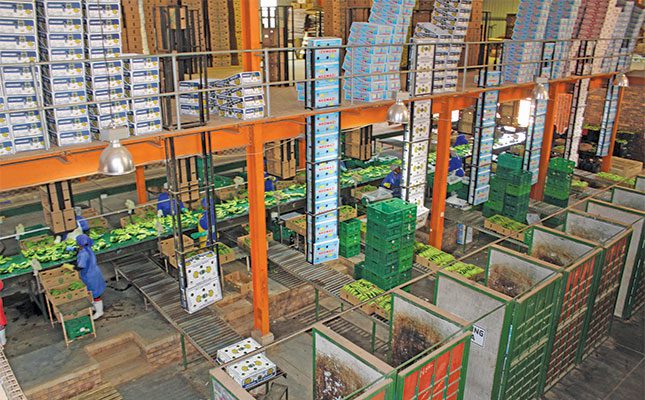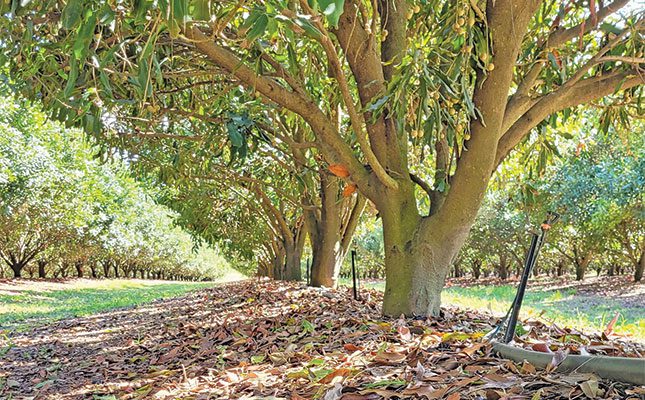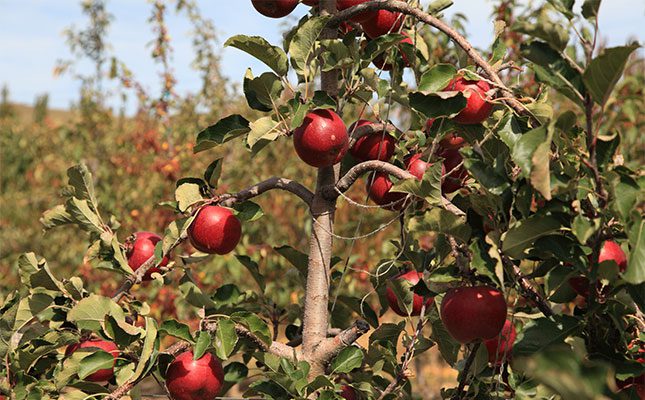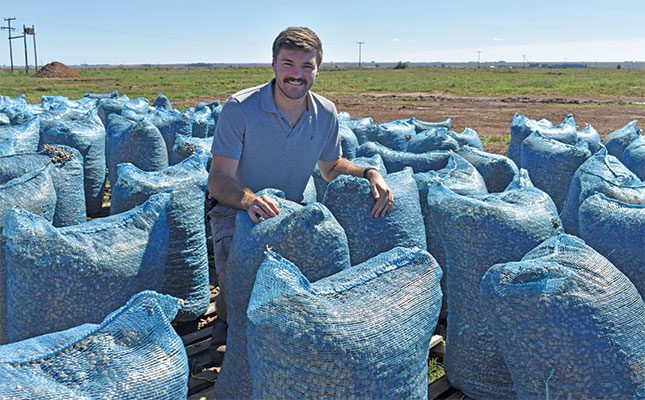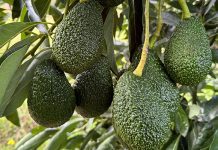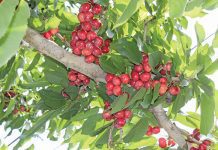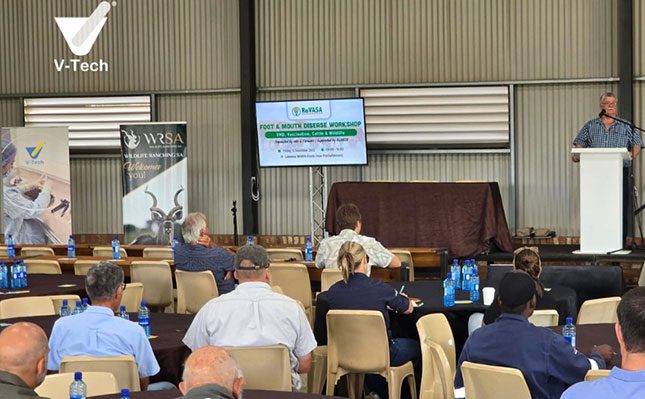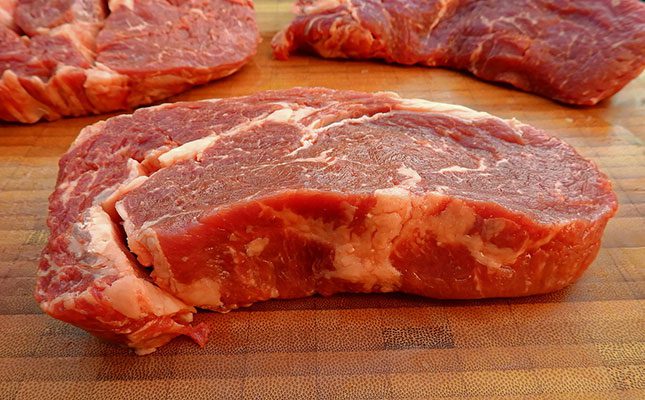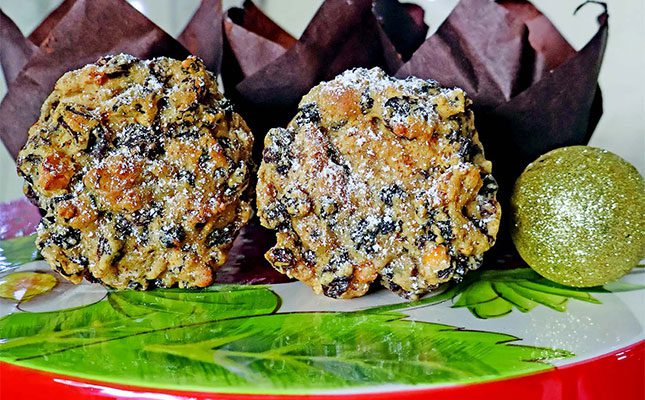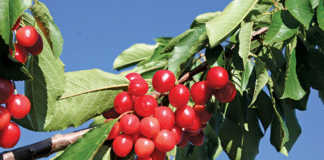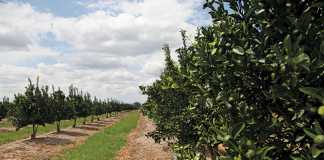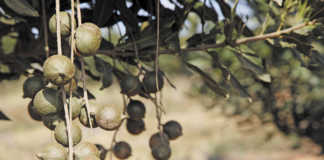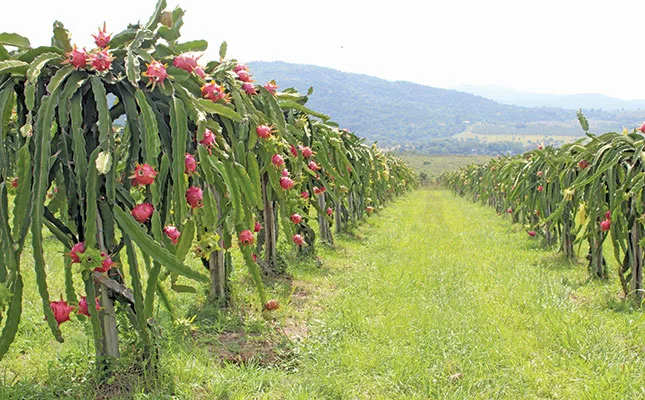
Photo: Lindi Botha
Dragon fruit’s striking appearance has lured many a consumer, only to leave some with mixed reactions.
If the right variety, produced optimally, was sampled, consumers are delighted. But having bitten into bland fruit, the appeal of dragon fruit’s unique appearance quickly fades. Herein lies the conundrum for local producers: which varieties should be planted, and how should they be managed?
Dragon fruit originated in South America, but Vietnam is currently the world’s largest producer. Production information in English is few and far between. Complicating matters further is that South Africa’s production conditions vary greatly from those in the Americas and Asia.
Add the host of varieties available that offer varying levels of flavour and sweetness, and it is no surprise that dragon fruit farming in South Africa is particularly challenging.
Freddie Steyn, dragon fruit farmer near Mbombela, Mpumalanga, was one of the first local producers to plant the crop, establishing a 4ha block in 2014.
“By 2019, we were seriously considering removing the dragon fruit. We had a lot of challenges – we weren’t getting good yields, the plants were riddled with fungal diseases, and sunburn was excessive. The market was also difficult since dragon fruit was still quite unknown.”
But through trialling different varieties and fine-tuning management practices, Steyn’s yields are nearing 20t/ha, double that achieved in 2021. The fruit’s average Brix level is at 17, and this year 92% of the harvested fruit was marketed, with 50% destined for export markets.
Steyn recently hosted a farmers’ day on their family farm, Kuifkop Beleggings, to share the lessons he has learnt.
Setting up the orchard
Steyn cultivates two varieties commercially on 10ha. A further five varieties are being trialled on a smaller scale. These trials are conducted for three years before he decides whether to proceed with them commercially or abandon them.
His criteria for proceeding with a variety include good size of fruit, adequate self-pollination, and good external and internal quality of fruit.
“Unfortunately, most varieties don’t make the cut. We currently have some exciting new varieties under evaluation, while we previously eliminated others that struggled to adapt,” he says.
New orchards are established using plants that have been made from cuttings and grown out in the on-farm nursery.
“The first harvest is then obtained within 24 months, with the orchard in full production by year four. When we planted cuttings directly in the orchard in the beginning, we struggled to get them to take, and the first harvest was delayed.”
The nursery is covered with 20% black shade net. Steyn notes that if the cuttings are grown under netting that is more dense, they will not be well adapted to the direct sunlight in-field and will be more prone to sunburn. The cuttings are placed in plant bags filled with a mixture of sand and compost.
To establish an orchard, Steyn advises that the field be ripped to ensure there is no soil compaction. Poles to support the plants must be erected. Steyn uses concrete lintels fitted with square steel heads on which the branches can rest. Plastic irrigation piping is fitted over the steel’s edge to ensure that it does not cut into the plant.
Initially, 2,4m poles were used, which protrude 1,8m above the ground. These, however, proved too tall for the staff to reach the top branches. Steyn then opted for 2,1m poles, protruding 1,5m above the ground, but these are too short, and his next orchard will utilise a length in between.
The poles are placed at a density of 800/ ha to 1 333/ha, with two dragon fruit plants per pole. This equates to a spacing of around 3,75m to 5m between the rows, and 2m to 2,5m between the poles within each row.
Regular pruning is important to ensure that the plant does not get too heavy and topple over. After the harvest, any side shoots are removed so that only branches that grow from the crown are left.
“We leave branches with three years of growth on the plant, removing anything older. Excess vegetative growth is not good for yield as the tree must work too hard to keep all the branches going. If you can see through the plant, then the branch density is optimal.”
Irrigation
An important lesson Steyn learnt was to carefully manage irrigation to prevent fungal diseases. The first orchards utilised micro irrigation, which sprayed water against the tree trunk, causing it to rot. When the system was switched over to drip irrigation, plant health improved.
“We use low-flow drip irrigation, which provides water at a rate of 0,9ℓ/hour to 1,2ℓ/hour. Some rows have only one dripper line, while others have two, depending on plant population and soil type.
“The water has to drain properly, because plants become susceptible to fungal diseases if the roots don’t get enough oxygen,” says Steyn.
Managing water flow is important since dragon fruits’ roots are shallow, although they stretch wide across the orchard floor.
“Our profile holes show that 80% of the roots are in the top 30cm of the soil. I stressed the plants once to see if I could force them to send the roots deeper, but it didn’t work.
“You need to manage the water so that it stays in that top zone, as anything seeping deeper is a waste. This is why a high-flow rate in a short period does not work. Our irrigation is scheduled to provide water over a two-hour cycle, twice a week, to allow us to provide fertiliser through the irrigation system. The levels on our moisture probes just start to lift before the water is switched off,” he says.
The drippers are positioned 600mm apart, which is adequate in keeping the whole row wet.
Although Kuifkop receives around 800mm to 1 000mm of rain per year, the dragon fruit still require additional irrigation of 3 300m³/ha/year. Most of the irrigation is done in winter and spring, since little rain is received during these months.
Fertile soils
Improving soil fertility through compost and mulching has been a big reason for Steyn’s success, since plant health has improved. In winter, compost is applied in each row at a rate of 6t/ha. The compost is made on the farm, resulting in big savings.
“If we had to buy in this amount of compost, it would cost around R150 000 per year. We use our own material and get quite a bit from the surrounding area, so the compost ends up costing about R40 000 per year.”
He adds that investing in the right equipment to make good compost is vital.
“We made very weak compost until we got a compost turner. If you have the right equipment, you can make proper compost.”
Cover crops are planted between the plants, which are periodically mulched and left in the rows. Steyn notes that these have been easier to establish in some blocks than in others.
“We have a variety of perennial summer grasses on the farm that compete with cover crops during establishment. These grasses also act to keep the soil covered, but are not ideal as a companion crop for the dragon fruit. We plant broadleaf, perennial cover crops that bind nitrogen. When it’s cut, it breaks down quite quickly and adds nitrogen to the soil. In blocks where the cover crops have been established, I apply 80kg/ha less nitrogen than in blocks where there is only grass. The broadleaves make a good mulch and the plants are just healthier in general.”
Keeping the soil protected is important in an area where summer temperatures can reach up to 43°C.
“Uncovered soil then sits at 36°C at a depth of 2cm, whereas soil under cover crops are at 22°C to 24°C. The shallow roots perish if they are not protected from such high temperatures. We also save on irrigation, as the soil retains moisture for longer when it is covered.”
Steyn does not use any herbicides on the farm. Any unwanted weeds or grass are cut with brush cutters. “This adds to our costs – around R25 000/month – but we need the material for mulch and compost.”
Biocontrol
Steyn’s exclusion of harsh chemicals like herbicides extends to pest control. No chemical active ingredients for pest control have been registered for use on dragon fruit in South Africa, leaving farmers with little choice. This does however present benefits, since Steyn’s orchards are healthier and the fruit popular in the pesticide-averse EU market.
An insight that has aided this journey is the impact that sunburn has on the crop.
“We had a lot of fungal diseases previously, which we realised was caused by sunburn. When the leaves are sunburnt, the plant is stressed and becomes very susceptible to fungal diseases. Rather than apply fungicides, we started spraying aluminium silicate on the plants as soon as the last fruit is removed. This way, we’ve reduced 80% of the fungal diseases, and the plants are healthier overall because they are not stressed,” says Steyn.
Other pests include thrips, aphids, leaf hoppers, ants and snails. While a flock of ducks is useful in keeping snails at bay, Steyn notes that they are frequently stolen and must be protected.
“We’ve seen a big reduction in the snail population from one year to the next when the ducks are brought in. The snails hide under the mulch, so reaching them is difficult, but the ducks find them.”
The right nutrition
The right fertiliser programme goes a long way to obtaining sweet, flavourful dragon fruit. With bland fruit being one of the biggest challenges in increasing market demand, it is an aspect that farmers need to pay particular attention to.
Steyn notes that there is no ‘off’ season for dragon fruit. “The plants constantly need nutrition and water. You don’t necessarily have to change cultivars to get a better flavour profile. Improvements can be made with the right nutrient mix and dosage.”
While some varieties of dragon fruit are self-pollinating, fruit set is improved by bees. Steyn therefore places bee hives in the orchard during flowering, at a rate of five hives per hectare.
While Steyn says the farm is ‘green’ when it comes to pest control, he does not shy away from fertiliser. “We do soil analysis annually to determine our fertiliser programmes. After harvest, we add nitrogen to encourage new growth, since new shoots bear fruit the next season. But overall, we use as little nitrogen as possible. The plants do need a lot of potassium, and also benefit a lot from foliar feeds.”
Optimal nutrition requires a thorough understanding of the function and effect of the respective elements.
Speaking at the farmers’ day, Andries van der Walt, business unit manager at Timac Agro, explained that nitrogen stimulates growth, phosphate provides an energy boost to ensure proper plant and root growth, while potassium ensures good quality. These main macro elements are needed in the largest quantities.
“Nitrogen deficiencies are characterised by yellowing plants, especially in older leaves. Phosphorus deficiencies are likely to produce stunted growth, discolouration of the leaves and necrotic spots on the leaves, while potassium deficiencies manifest as necrosis, especially on the leaf tips,” Van der Walt explains.
Other macro nutrients required for a good dragon fruit crop are calcium, magnesium, and sulphur. Calcium promotes growth and extends the shelf life of fruit by strengthening cell membranes and forming new cells.
It also acts as a messenger molecule that initiates various plant responses to environmental stress. Deficiencies manifest as necrosis of young plant tissue, like root tips and leaf tips. Young leaves may also be malformed.
Magnesium, also an energy provider, has a synergistic relationship with phosphorus and is involved in its movement through the plant. Magnesium forms the core of the chlorophyll molecule, playing a specific role in activating enzymes involved in respiration, photosynthesis and the formation of DNA. Deficiencies cause yellowing between leaf veins that occurs first in older leaves.
Sulphur helps improve the flavour of the fruit, and deficiencies will present similar to nitrogen deficiencies, resulting in leaf yellowing and stunted growth.
Van der Walt says that various micro elements are needed to take a dragon fruit crop from average to good. These include molybdenum, iron, manganese, boron, zinc and copper.
“Molybdenum improves flowering, while boron boosts pollen and flower development. Iron supports vegetative growth, and manganese, copper and zinc ensure the plant has enough energy,” he adds.
Harvest and marketing
Steyn harvests the fruit just after it has coloured to get the optimum balance between shelf life and taste. In South Africa, the dragon fruit season is typically between January and May.
Dragon fruit produces multiple flushes in a season, providing several harvests. This year, Steyn’s orchard produced four flushes.
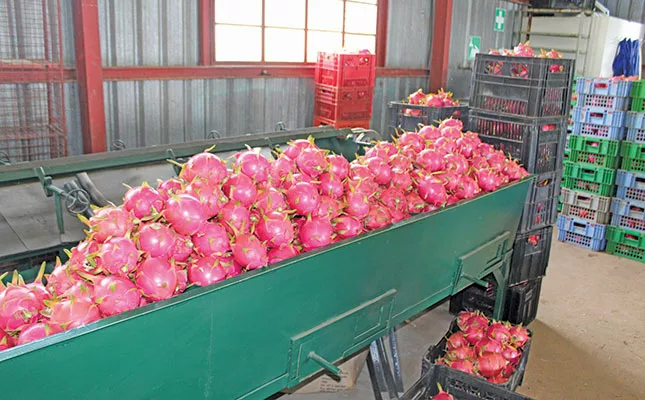
“The first flush is usually the biggest as the plant has a lot of energy reserves. It’s not ideal, because it means our biggest harvest is ready at the start of the year, when most consumers don’t have a lot of money. We have tried to manipulate the plant to produce less in the first flush by breaking off flowers, but it has not been successful. We’d remove one flower, and soon the plant would drop the one next to it. Now we leave the plant to determine for itself how much it can bear,” he says.
Another consequence of multiple flushes is that fruit towards the end of the season can be less flavourful. This is why optimal nutrition management is vital to ensure the plant has all the energy it needs to consistently produce good-quality, flavourful fruit.
The harvest season coincides with high temperatures and the rain season in Mpumalanga. While harvesting wet fruit is not problematic, dragon fruit should not be wet when placed in cold storage as this could damage the fruit.
Harvested fruit is placed in crates and taken by tractor to the farm’s packhouse. Delays in this process can easily send the fruit’s temperature to 40°C.
“The few hours between harvest and cooling in the packhouse is when the quality deteriorates the most. Initially, we didn’t think it was so serious, but when we started testing the time it takes to get the fruit to the packhouse, we saw that it does make a difference. Ideally, the fruit should be in the cooling rooms within two hours of being harvested, and is likely to then last a week or two longer on the shelf,” says Steyn.
In the packhouse the fruit is cleaned, sorted and packed, and then placed in a cold room at 6°C. This temperature is maintained during transportation to market.
Steyn’s recipe for success has been achieved through years of trial and error, and will no doubt continue to be fine-tuned every season.
As he continuously works to optimise production practices, he is sure to provide sweet, tasty dragon fruit, keeping consumers coming back for more.
Email Freddie Steyn at [email protected].

